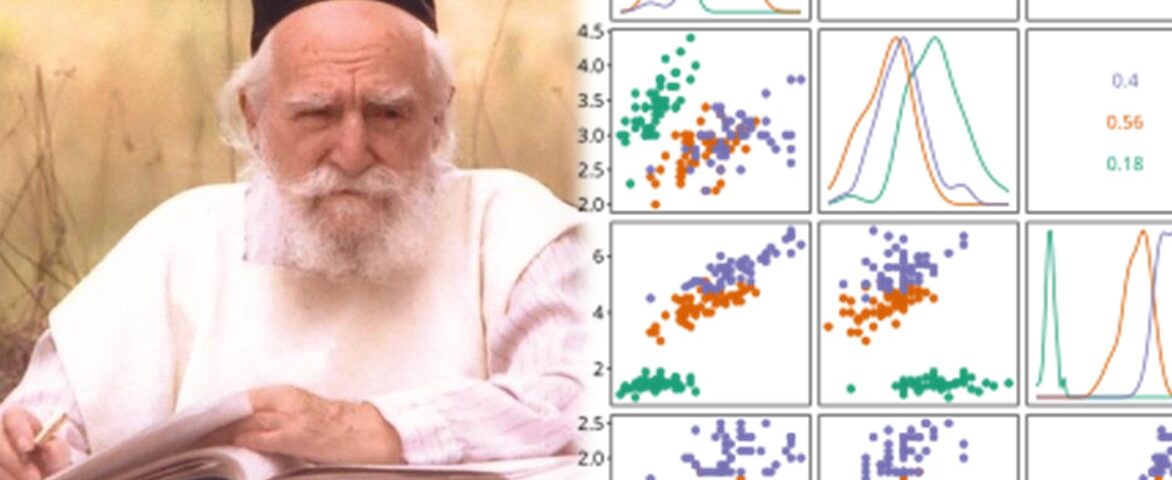RESPONSE: The Statistics of Pesak

 I have been following Rabbi Moshe Kurtz’s “Unpacking the Iggerot” series with great interest over the past few months. I found the recent few installments of particular interest as they indicate a somewhat selective approach to statistical evidence by R. Moshe Feinstein in rendering his halakhic rulings. In “Unpacking the Iggerot: Smoking,” R. Kurtz describes how R. Feinstein “assert[ed] that the risks of smoking do not meet the standard of authentic danger” to require an outright prohibition, and subsequently in 1981 “dismisse[d] Dr. Rosner’s experience with treating numerous lung-cancer patients as the result of availability heuristic (extrapolating based on the cases that come before him).” Indeed, in his 1963 responsum on smoking R. Feinstein observed that “many Torah giants of the previous and current generation smoke” and “even for those who wish to be stringent to account for potential danger, there would not be a violation of ‘placing a stumbling block’ by extending a flame or match to one who smokes.”
I have been following Rabbi Moshe Kurtz’s “Unpacking the Iggerot” series with great interest over the past few months. I found the recent few installments of particular interest as they indicate a somewhat selective approach to statistical evidence by R. Moshe Feinstein in rendering his halakhic rulings. In “Unpacking the Iggerot: Smoking,” R. Kurtz describes how R. Feinstein “assert[ed] that the risks of smoking do not meet the standard of authentic danger” to require an outright prohibition, and subsequently in 1981 “dismisse[d] Dr. Rosner’s experience with treating numerous lung-cancer patients as the result of availability heuristic (extrapolating based on the cases that come before him).” Indeed, in his 1963 responsum on smoking R. Feinstein observed that “many Torah giants of the previous and current generation smoke” and “even for those who wish to be stringent to account for potential danger, there would not be a violation of ‘placing a stumbling block’ by extending a flame or match to one who smokes.”
However, in “Unpacking the Iggerot: Animal Cruelty,” we find that in 1982 R. Feinstein relied on certain statistical evidence to rule that “[calves] would require a more thorough examination to ascertain their kashrut on a case by case basis” and advised “the religiously meticulous to refrain from partaking in veal altogether” (for concern with some statistical possibility of treifot).
Are there other instances in R. Feinstein’s responsa of his use or discussion of statistics to give us more data points to come up with a synthesized approach? In another case discussed in “Unpacking the Iggerot: Shabbat Timers and Hatzalah,” R. Feinstein ruled that a kli shlishi categorically does not cook its contents as “we cannot say [i.e., legislate new laws] on our own, but from tradition alone.” Certainly there is a “tradition” with respect to kashrut that is not in existence as to smoking. But that alone does not explain the dicta (as it were) when it comes to how he approached statistics in the two different situations.
It is certainly understandable why R. Feinstein would have been reluctant to legislate new stringencies, particularly in the absence of a tradition prohibiting smoking as opposed to millenia-old halakha relating to kashrut. Yet, his permissive attitude toward smoking—and his apparent dismissal of concerns as to this practice “even for those who wish to be stringent”—is at odds with his advice to the same demographic regarding the kashrut of veal.
Benjamin Folkinshteyn is Founding Partner at Woltz & Folkinshteyn, P.C., in Stamford, CT.
Moshe Kurtz responds:
I thank Mr. Folkinshteyn for closely following our “Unpacking the Iggerot” series. His legal mind has been an asset to me and this is just one example of his incisive feedback. I believe he is pointing to an important question about the use of statistics in halakha. There are principles of rov (following the majority) and mi’ut ha-matzui (concern for a significant minority). The challenge is that the contemporary yardstick of scientific studies to generate statistics is not likely what the Talmud had in mind when it invoked an umdana (expectation of norms based on collective observation). The principle of treifot, as in the case of veal, is an area of halakha in which probability plays a role in determining why we are more careful about checking the lungs versus other parts of a presumably kosher animal. Mr. Folkinshteyn’s question is likely better than my answer—but I suggest that R. Feinstein dismissed Dr. Rosner’s report since he did not appear (at least at that juncture) to be presenting R. Feinstein with an incontrovertible, peer-reviewed study, but rather his anecdotal experience, to which R. Feinstein noted his availability bias. However, in the case of veal, he received reports from multiple shochtim, which was more reliable than one man’s observations. While his question remains, I thank Mr. Folkinshteyn for bringing it to my attention, as well as the readership of TRADITION.
For further reading on this, one may be interested in R. Nachum L. Rabinovich’s “Probability in the Talmud,” Biometrika 56:2 (1969), 437–441.

1 Comment
I think there may be an additional distinction between the issues that are presented by Mr. Folkinshteyn. The issue of probability in treifos is a clearly defined equation. How many treifos are found in how many animals. There is little to no room to avoid those numbers.
The question of probability of health issues from smoking is less clearly defined. What do you consider a health issue? Are there other potential causes? How much smoking must one do and for how long to be considered at risk? Perhaps it is these variables that caused Rav Moshe to refrain from prohibiting smoking under any circumstances.
A similar issue presents itself when trying to analyze statistics to establish procedures for checking produce for bugs. In that case the concept of miut hamatzui (significant minority) is used as well and the requirement of checking for treifos is used as a paradigm. The problem with this comparison is that when an animal is deemed to be a treifa, the entire animal isn’t kosher. But what statistical set is used for checking vegetables? A bug found at least 10 percent of the time per bite? Per bowl? Per serving? Per package? Obviously, the larger the sample you use the higher likelihood that a bug will be found. While the treifos paradigm serves as a good starting point for the bug probability discussion, there is still a need for more precision.